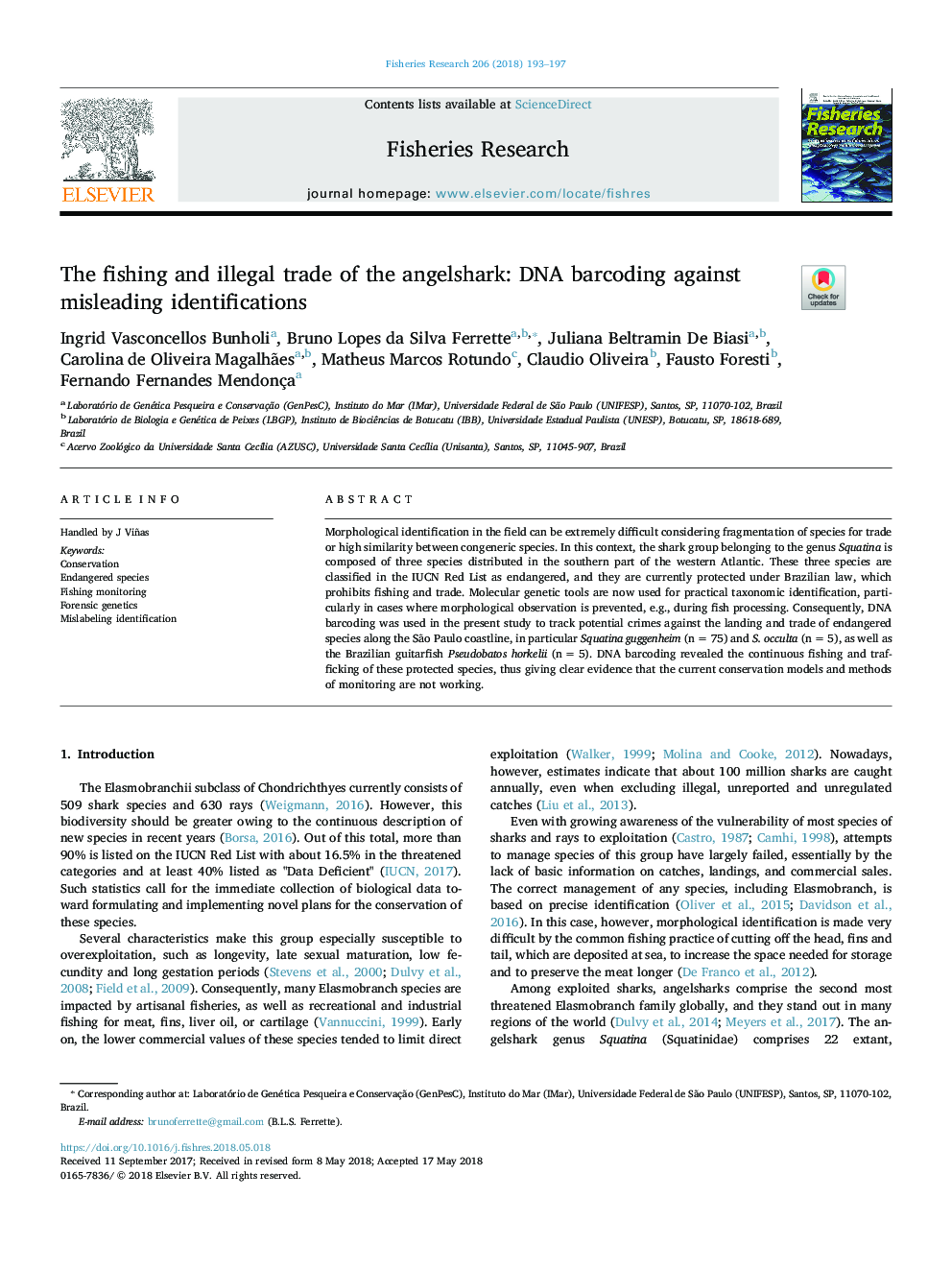| Article ID | Journal | Published Year | Pages | File Type |
|---|---|---|---|---|
| 8885284 | Fisheries Research | 2018 | 5 Pages |
Abstract
Morphological identification in the field can be extremely difficult considering fragmentation of species for trade or high similarity between congeneric species. In this context, the shark group belonging to the genus Squatina is composed of three species distributed in the southern part of the western Atlantic. These three species are classified in the IUCN Red List as endangered, and they are currently protected under Brazilian law, which prohibits fishing and trade. Molecular genetic tools are now used for practical taxonomic identification, particularly in cases where morphological observation is prevented, e.g., during fish processing. Consequently, DNA barcoding was used in the present study to track potential crimes against the landing and trade of endangered species along the São Paulo coastline, in particular Squatina guggenheim (nâ¯=â¯75) and S. occulta (nâ¯=â¯5), as well as the Brazilian guitarfish Pseudobatos horkelii (nâ¯=â¯5). DNA barcoding revealed the continuous fishing and trafficking of these protected species, thus giving clear evidence that the current conservation models and methods of monitoring are not working.
Related Topics
Life Sciences
Agricultural and Biological Sciences
Aquatic Science
Authors
Ingrid Vasconcellos Bunholi, Bruno Lopes da Silva Ferrette, Juliana Beltramin De Biasi, Carolina de Oliveira Magalhães, Matheus Marcos Rotundo, Claudio Oliveira, Fausto Foresti, Fernando Fernandes Mendonça,
